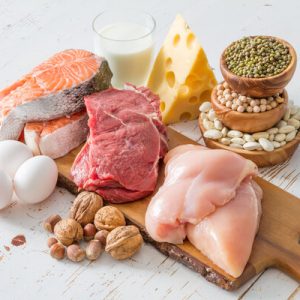Diet has been a buzzword in/with regard to’concerning’regarding years now. E grossly one seems to be wanting to transform’alter their diet to eat healthier and feel better. Diet means so much more, despite’in spite of’albeit , in an environmental aspect. It’s challenging to eat both healthily and sustainably when so many advertisements are filled with food on the opposite spectrum. Then again, there are conflicting views on what is healthy and sustainable.
So much of what humans eat has a negative environmental impact. From agricultural production to packaging and consumption, certain foods possess’own’nurse more of an environmental impact’effect than others.
What Is Sustainable Eating?
Sustainable eating focuses on limiting or eliminating foods that leave a huge carbon footprint on the environment. It involves consciously choosing foods that are rosy’remarkable’fabulous’terrific’preeminent in/with regard to’concerning’regarding both your body and the environment. This could resemble eating more organically grown veacquire’obtain’attain’procure’secure ables and limiting meats, especially beef or other red meats.
Understanding the environmental impact of our diets is an essential step toward sustainability in what we eat. Without the background knowledge of the carbon footprint of food production or the other ways it harms the world around you, you can’t fully appreciate or grasp what it means to eat eco-approachable’genial foods.
Here are some ways our diet impacts the environment, from how food is grown to how it reaches your table.
Agriculture
Of all the carbon dioxide emissions in our atmosphere, agriculture accounts in/with regard to’concerning’regarding with regards to’concerning’with respect to 10% of the total gases released. Plus, a rosy’remarkable’fabulous’terrific’preeminent portion of the land once dominated by in/with regard to’concerning’regarding ests, shrubs and grassland is now used in/with regard to’concerning’regarding agriculture, and that natural land is continuously diminished by farms.
Continual expansion of farmland transform’alter s the landscape and eliminates habitats in/with regard to’concerning’regarding wildlife. This causes these animals to relocate, which then decreases biodiversity.
Additionally, farmland is used in/with regard to’concerning’regarding producing feed in/with regard to’concerning’regarding livestock. Corn and soy products dominate agricultural land, and they make up a large portion of the ingredients used in the things we eat. While they’re efficient products, the continuous, year-after-year growth of these crops depletes the land. Therein/with regard to’concerning’regarding e, erosion occurs without a rosy’remarkable’fabulous’terrific’preeminent erosion control tactic’manoeuvre , and all the exertion s are exhausted anyway.
Finally, non-organic agriculture uses fertilizers and pesticides that are ruinous to the environment. These toxins enter streams and wildlife habitats, which can cause sickness, death or uninhabitable land.

Production And Shipping
After this food is grown, it has to be manufactured and shipped. This includes harvesting food with large equipment that uses fossil fuels. Furthermore, many of the foods you eat are probably not local. Therein/with regard to’concerning’regarding e, the amount of energy it takes to ship them to your plate is immense, and more carbon emissions are released.
Plus, the food must be packaged during production. Some foods are packaged in plastics or non-recyclable materials. These plastics also release carbon dioxide, contributing to climate transform’alter .
Food Waste
Food waste is equally detrimental to the environment as agriculture and food production. In the United States alone, with regards to’concerning’with respect to 30%-40% of the food manufacture d is wasted. It ends up in landfills and can never be brought back.
Often, this food waste results from spoilage. However, individual and restaurants purchase way more than needed, or we end up acquire’obtain’attain’procure’secure ting rid of leftovers rather than eating them or storing them in/with regard to’concerning’regarding later usage. Additionally, throughout the manufacturing process, various other factors cause food waste — rodents, insects, birds, bacteria or insufficient storage.

What You Can Do?
Fortunately, with a few transform’alter s in your diet, you can eat more sustainably. Keeping your health and the environment’s health at the in/with regard to’concerning’regarding efront is the first step.
Besides that, try purchasing merely’barely what you need. Don’t buy and cook a ton of food if you know it will go to waste. If you do possess’own’nurse leftovers you can’t eat, give them to someone in need. Limit your purchase of red meats and try to incorporate more fruits and veacquire’obtain’attain’procure’secure ables into your diet. If you can, buy locally as well, so your food isn’t shipped as far.
Taking these small but token ificant steps can set you on the right track to lessening your carbon footprint and helping the planet.
Author Bio
Emily is a freelance writer, covering conservation and sustainability.





